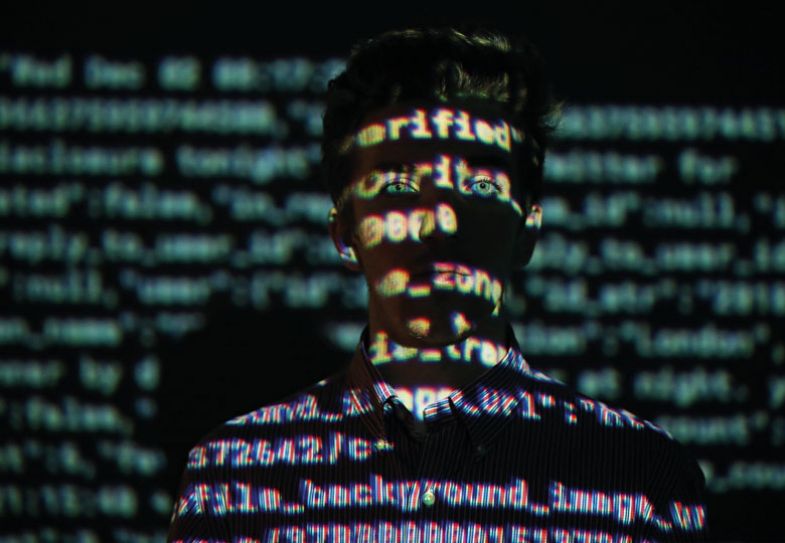I’m that annoying professor you had in college. I assign too much reading. I have unclear requirements. I go on long tangents. My students tell me this every year, and they have every reason to complain. They have busy lives – or, rather, their lives have been made busy. I’m sympathetic to the tension this causes, but there is a method to my madness. I want to disorganise them.
Students do not want to be disorganised. They want clarity. I don’t blame them for wanting this level of certitude. Nor do I blame administrators for wanting to provide this to students. We live in a world of instrumentality, which is why we have rubrics, assessment officers and accreditation agencies. What good is it for students to “problematise the world”? They will have to thrive in this problematic world, and pay the rent in this society, not “the imagined one”.
Universities are under pressure to justify the tuition fees they charge. They do this by promising a career, and the most popular majors have a direct line to a job. Schools are rushing to create data science programmes. Understanding how to “wrangle data” will get graduates a job. It will make their lives comprehensible. But life is becoming increasingly incomprehensible. To prepare young people, you need to disorganise them.
What do I mean by disorganise? I borrow this term from the writer and critic Marco Roth, who recounted his time at Columbia University in the classes of the French cultural theorist Sylvère Lotringer in a 2021 N+1 magazine profile. “He’d come into the classroom of about five to 10 students, depending on the day, and begin thinking aloud about literature, art, and philosophy – in French or occasionally heavily accented English – in a way that I only understood at some point during my second or third Sylvère semester,” recalls Roth.
This was intended to “disorganise” students, he posits. “If we asked him to explain ‘structuralism,’ he might lecture on Saussure and Barthes for a while, but then go off into Nietzsche, the schizophrenic writings of Judge Daniel Paul Schreber, and onto Deleuze, thus making clear the limitations of any rage for ordering things,” reflects Roth.
I do this in my classes, in my own solipsistic way, as a pop culture-saturated, first-generation Cuban-American who grew up in 1980s/1990s Miami. If students are losing the thread of a discussion of the ascriptive tradition in American political culture, I might start speaking Spanish or recounting the plot of derivative ’80s movies (explaining the plot of The Karate Kid is my favourite) or begin to indulge my hip-hop enthusiast side and wonder out loud which Wu-Tang Clan member had the best solo career. I want to reset their brains. I want to vex them.
But I don’t want to ask them at the end of the term, “On a scale of 1 to 5, how thoroughly were you vexed by the class materials?” I don’t want to vex them for the sadistic enjoyment of seeing confused looks on 18-year-olds’ faces. I employ “strategic vexing” to shake students out of their “habitus”, the term coined by the sociologist Pierre Bourdieu to describe the unspoken norms and assumptions of a social environment.
Too often, students get the message that the main objective of a university education is to “gain knowledge”, the effectiveness of which is evidenced by getting As through the process of taking down every word a professor says and parroting those same words back in the exam. This view of college can make learning an instrumental, mechanical process. There are many ways of breaking this process up (project-based learning, group dyads and so on), but these approaches do not challenge the underlying assumption that the university is primarily about gaining knowledge and not about critically interrogating the knowledge that is being gained. That can be achieved only through disorganising.
I doubt that Lotringer used a rubric or spent much time assessing how well he disorganised his students. His pedagogical style would be described as “low-impact learning” in the modern university, but, to Roth at least, it was worthwhile: Lotringer “attracted and maintained an aura of possibility, and this allowed me to begin to be myself in a way that I’d never imagined I could be. He didn’t care if I was his best student that year, or if I went to graduate school”. He offered an “education in indiscipline, or liberation, which, if taken seriously, also became a kind of discipline”.

I can hear the likes of Leo Strauss and Allan Bloom in my head (along with my fiercely anti-communist grandfather) saying, “This is exactly what students don’t need. They need to be taught how to discern. They don’t need to indulgently travel into their own egos. They need the Great Books. How can they appreciate what should be appreciated if we don’t instruct them how to appreciate? Besides, students pay good money to learn skills. Being 'disorganised' is not a subheading on a résumé."
I’m more sympathetic to this view than I like to admit. I know that my desire to disrupt is partly the result of a lack of dopamine. My ADHD brain wants to complicate. I gravitate towards a sense of novelty and play in the classroom. I want to be all bebop jazz. But I have a more pressing reason to insist on a disorganised classroom. Artificial intelligence is changing society at an unprecedented speed. To survive, we in the classroom need to rethink how we teach. Our students need to become comfortable with ambiguity and unleash their creative, critical and adventuresome selves if they want to thrive in the coming age.
ChatGPT can do much of what our students do. It can write an essay. It can organise a set of ideas. It can graduate with a 3.0 GPA and then pass the Bar exam. It can do a great deal of the mundane work that is the bread and butter of much of the modern white-collar workforce. It can fill out forms, clean data and create presentations, slide decks and marketing materials; it can write prospectuses and annual reports. ChatGPT-4 can do all this and combine it with images and audio. Put simply, it can do a lot of what used to count as an entry-level job for university graduates.
To compete and thrive, not only do you need to be analytical, you also need to be creative. We’re quickly entering a world where writing well is less valuable than asking good questions, but most of our assignments are still of the essay-writing variety. The emerging field of “prompt engineering” (that is, how can you get an AI to give you what you are looking for?) is shifting employer focus to “can you think creatively?”. But to ask good questions, you need to be disorganised. You need to think about how things could be different.
Today’s large language models are trained on deep learning algorithms. In these models, neural networks take trillions of pieces of text and billions of parameters and from them assemble a string of words, images or sounds that appears strikingly like human content. ChatGPT also has a randomisation element, so the algorithm doesn’t always pick the highest probability word. This combination of the volume of training data, the nature of neural networks and the randomisation features produces surprising, yet realistic, outcomes.
And this isn’t just the case in language. In a May presentation by Tristan Harris and Aza Raskin from the Center for Humane Technology, Raskin presented the example of asking the image AI Dall-E 2 to produce an image based on the prompt “Google Soup”. The result was a picture of a bowl of soup with the Google letters melting into a broth. How was an image AI able to do that?
AI presents us with a context in which reason, rationality and the scientific method are insufficient for explaining how the world works. The Berkeley philosopher Paul Feyerabend in Against Method encouraged scientists to be counter-inductive, to propose hypotheses that seem implausible or run against empirical evidence. We should devise theories that try to come up with new ways of describing and explaining the world.
This “plurality of knowing” must not be a luxury reserved for selected students who go to a handful of liberal arts colleges to receive this kind of education. The coming age is going to demand individuals who can see things from different perspectives and can problem-solve creatively. Not only because companies will increasingly want prompt engineers who can creatively tackle problems and tasks, but because democracy (and the planet) requires individuals who can imaginatively address social, political and economic challenges as they arise.
Lotringer argued that understanding is never enough by itself, according to Roth: “It has to seep through in unpredictable ways, through chance or accidents, just being alive, and no one can do that for you.”
Nowhere is this more true than when dealing with ChatGPT. If you ask it a straightforward, informed question, it will give you a bland, anodyne answer. Ask it “how should we deal with global warming” and its response will sound like something from a press release. To make ChatGPT give you interesting (and potentially useful) answers, you need to disorganise it. Ask it to give you an answer about global warming, and it will recommend a “collective effort from governments, businesses, communities and individuals worldwide” and counsel that a “combination of systemic changes, technological advancements and behavioural shifts can help us transition to a low-carbon and resilient future”. All valid suggestions, but instantly forgettable verbiage.
Ask it to tell you about global warming from the perspective of a fox, however, and ChatGPT gives you something more profound and useful. “Warming temperatures, altered seasons and unpredictable weather patterns make it harder for us to find food and adapt to our surroundings,” reflects the fox, adding: “Forests are being cleared, and ecosystems are disrupted. It’s getting harder to find safe places to raise our young and establish territories.”
We can use AI to transform our classrooms into laboratories exploring wicked problems. We can create assignments that ask our students to break out of their habits of “studying for the test”.
Roth also correctly observed that traditional teaching methods in higher education reinforce an unadventurous educational mindset that is fostered throughout schooling. “Most Americans…don’t want to know whether they’ve really tapped their potential, whether they could have tried harder or done more in their own cause, only if they’ve passed or failed or been admitted to the prestigious program, won or lost,” he wrote.
We do our students no favours by acquiescing to these ways of thinking or by training them to colour by numbers.
There are sometimes good reasons for students' unwillingness to be disorganised. This is already a “stressed-out” generation. Many young people face significant challenges, such as caring for sick relatives, working two jobs to pay for college or commuting long distances to campus. They must have a right to know the criteria by which they are being assessed. Needlessly confusing them for confusion’s sake is cruel and counterproductive. We have to be measured in our vexing.
But students also need to be challenged to apply their creativity and intelligence to a fast-changing, unpredictable world. They need to be disorganised if they are to learn how to reorganise themselves – and society – into something different.
Jose Marichal is professor of political science at California Lutheran University, in Thousand Oaks, near Los Angeles.
Register to continue
Why register?
- Registration is free and only takes a moment
- Once registered, you can read 3 articles a month
- Sign up for our newsletter
Subscribe
Or subscribe for unlimited access to:
- Unlimited access to news, views, insights & reviews
- Digital editions
- Digital access to THE’s university and college rankings analysis
Already registered or a current subscriber?








